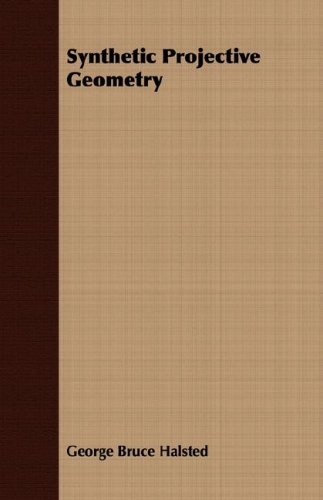Product desciption
Synthetic Projective Geometry 4ed Reprint 1906 George Bruce Halsted by George Bruce Halsted 9781406773002, 140677300X instant download after payment.
MATHEMATICAL MONOGRAPHS. EDITED BY MANSFIELD MERRIMAN AND ROBERT S. WOODWARD. No. 2. SYNTHETIC PROJECTIVE GEOMETRY. BY GEORGE BRUCE HALSTED, PROFESSOR OF MATHEMATICS IN KKNYON COLLEGE. FOURTH EDITION, ENLARGED. FIRST THOUSAND. NEW YORK JOHN WILEY SONS. LONDON CHAPMAN HALL, LIMITED. 1906. EDITORS PREFACE. THE volume called Higher Mathematics, the first edition of which was published in 1896, contained eleven chapters by eleven authors, each chapter being independent of the others, but all supposing the reader to have at least a mathematical training equivalent to that given in classical and engineering colleges. The publication of that volume is now discontinued and the chapters are issued in separate form. In these reissues it will generally be found that the monographs are enlarged by additional articles or. appendices which either amplify the former presentation or record recent advances. This plan of publication has been arranged in order to meet the demand of teachers and the convenience of classes, but it is also thought that it may prove advantageous to readers in special lines of mathematical literature. It is the intention of the publishers and editors to add other monographs to the series from time to time, if the call for the same seems to warrant it. Among the topics which are under consideration are those of elliptic functions, the theory of num bers, the group theory, the calculus of variations, and non-Euclidean geometry possibly also monographs on branches of astronomy, mechanics, and mathematical physics may be included. It is the hope of the editors that this form of publication may tend to promote mathematical study and research over a wider field than that which the former volume has occupied. December, 1905. iii AUTHORS PREFACE. MAN, imprisoned in a little body with short-arm hands instead of wings, created for his guidance a mole geometry, a tactile space, codified by Euclid in his immortal Elements, whose basal principle is congruence, measurement. Yet man is no mole. Infinite feelers radiate from the win dows of his soul, whose wings touch the fixed stars. The angel of light in him created for the guidance of eye-life an inde pendent system, a radiant geometry, a visual space, codified in 1847 by a new Euclid, by the Erlangen professor, Georg von Staudt, in his immortal Geometric der Lage published in the quaint and ancient Nurnberg of Albrecht Dtirer. Born on the 24th of January, 1798, at Rothenburg ob der Tauber, von Staudt was an aristocrat, issue of the union of two of the few regicrenden families of the then still free Reichsstadt, which four years later closed the 630 years of its renowned exist ence as an independent republic. This creation of a geometry of position disembarrassed of all quantity, wholly non-metric, neither positively nor negatively quantitative, resting exclusively on relations of situation, takes as point of departure the since-famous quadrilateral construction. To-day it must be reckoned with from the abstractest domains of philosophy to the bread-winning marts of applied science. Thus Darboux says of it It seems to us that under the form first given it by von Staudt, projective geometry must become the necessary companion of descriptive geometry, that it is called to renovate this geometry in its spirit, its procedures, its applica tions. KENYON COLLEGE, GAMBIER, OHIO, December, 1905. CONTENTS. INTRODUCTION Page 7 ART. i. THE ELEMENTS AND PRIMAL FORMS 8 2. PROJECTING AND CUTTING 10 3. ELEMENTS AT INFINITY 10 4. CORRELATION AND DUALITY 12 5. POLYSTIMS AND POLYGRAMS 12 6. HARMONIC ELEMENTS 15 7. PROJECTIVITY 18 8. CURVES OF THE SECOND DEGREE 20 9. POLE AND POLAR 25 10. INVOLUTION 26 11. PROTECTIVE CONIC RANGES 29 12. CENTER AND DIAMETER .... 32 13. PLANE AND POINT DUALITY 34 14. RULED QUADRIC SURFACES 36 15. CROSS-RATIO 42 1 6. HOMOGRAPHY AND RECIPROCATION 45 17. TRANSFORMATION. PENCILS AND RANGES OF CONICS .... 54 INDEX 59 SYNTHETIC PROJECTIVE GEOMETRY...


